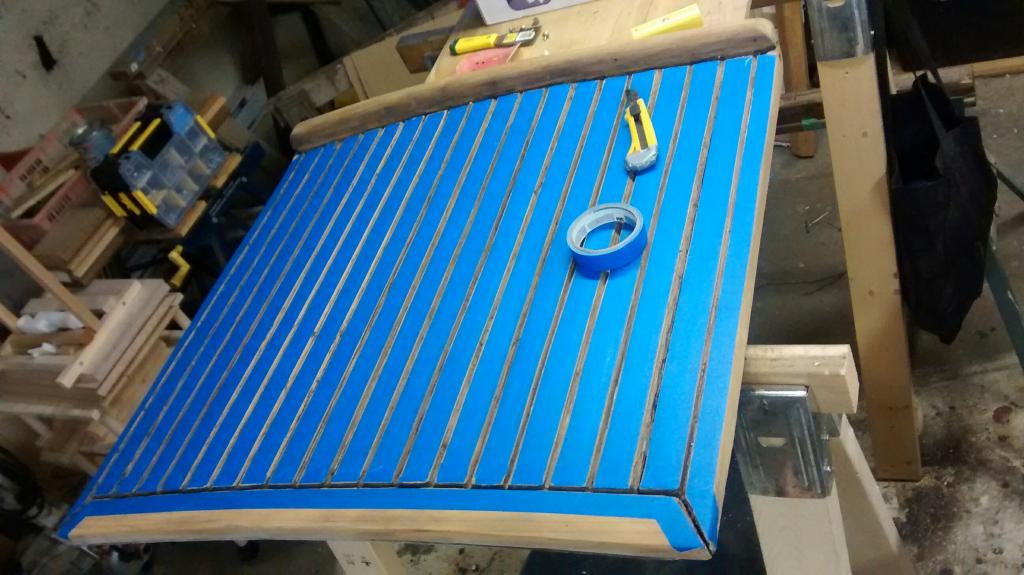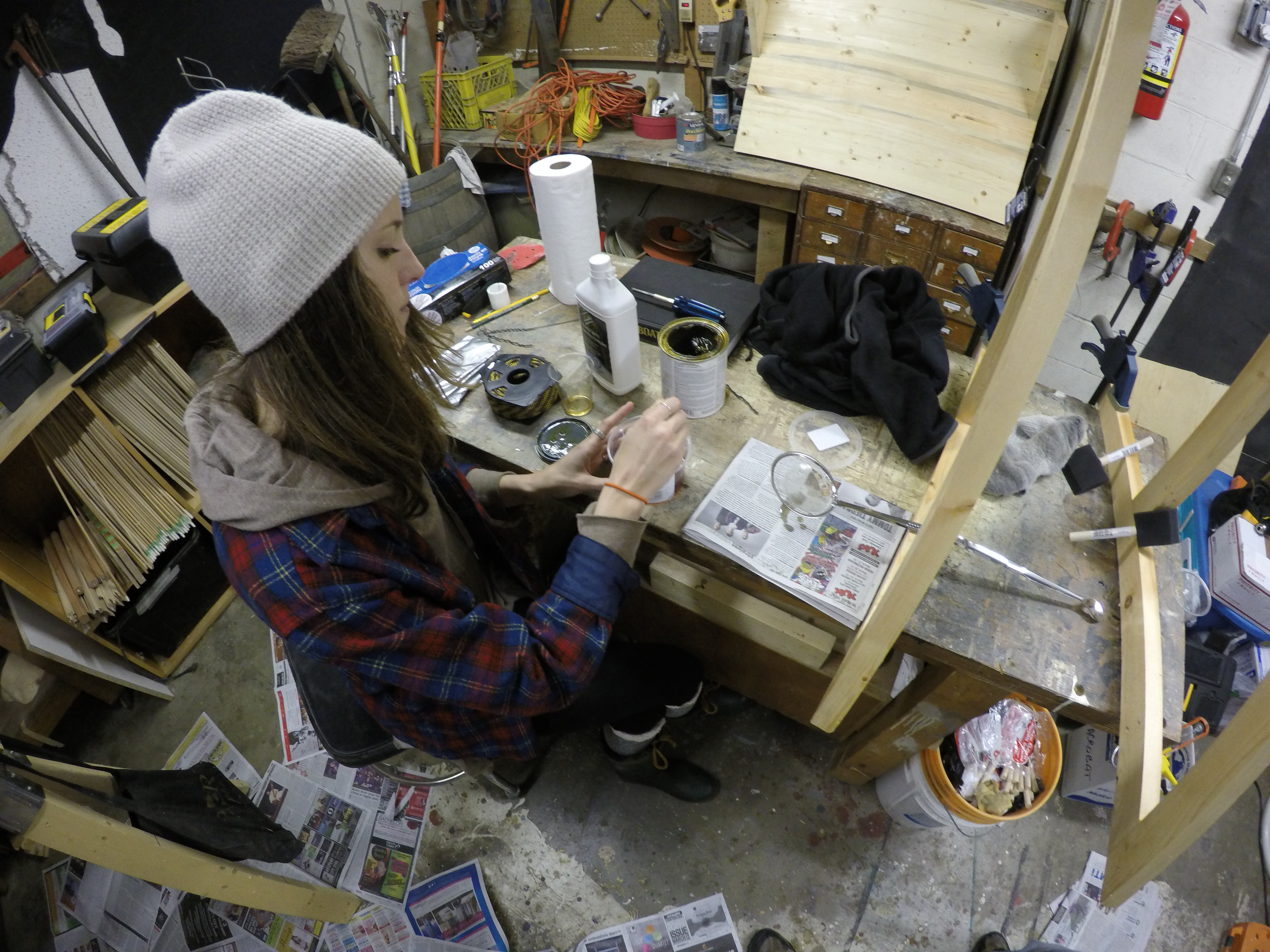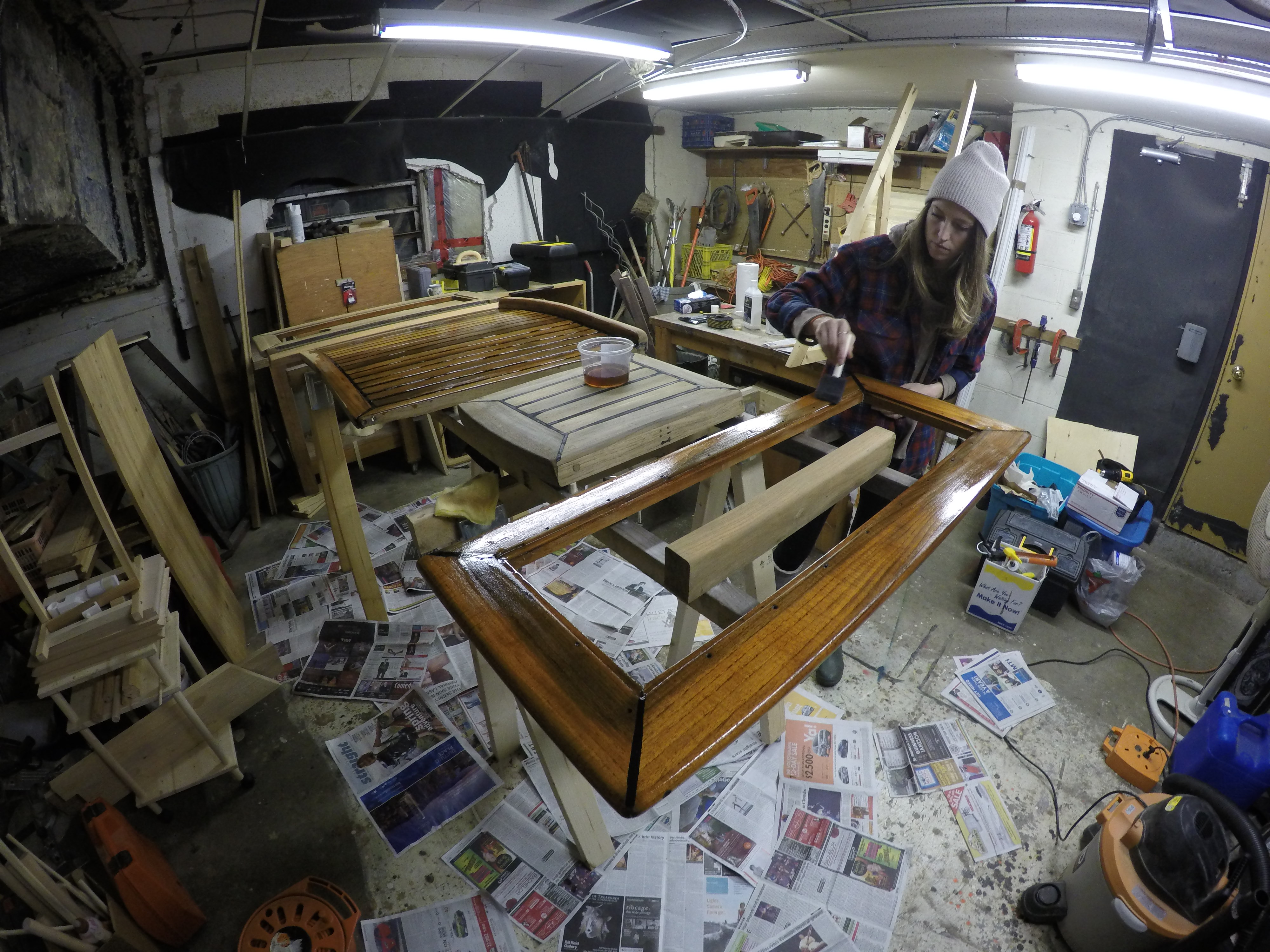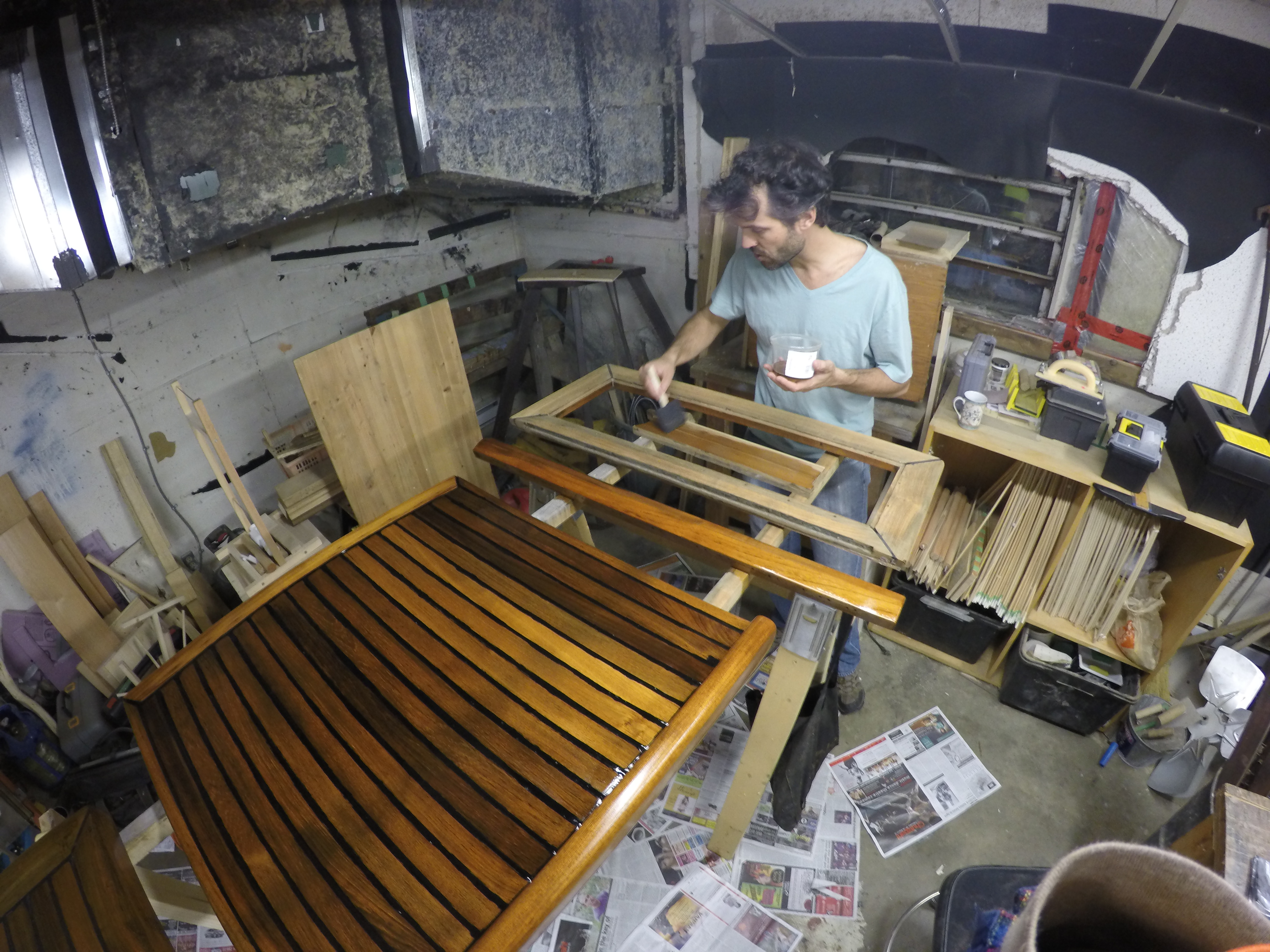UPDATE March 2020: Do not try and fill in the groove between teak planks with black epoxy as we detail below. The epoxy quickly cracks due to thermal expansion and the whole thing ends up leaking. One of those live and learn moments!
We have been working very, very hard on Leela as of late. Big life changes happening as well, subjects for another post coming soon. Who knew that buying a 38-year-old forest of teak boat was so much work? We actually do enjoy the work very much. It’s a change for me to be doing manual work as opposed to crunching numbers all day long. The challenging part is the speed (ie timetable) at which we must complete this work. I think one day we will look back in awe at how much work we completed in 5 short months.
We have been lucky that the COOP at which I live(d) has a wonderful workshop. This has been our home for many evenings over the winter. Mainly woodworking type projects. Some friends came by to help here and there too! Now that the boat is under dry storage and my final day of work is coming up we are slowly transitioning out of the workshop and into the boat shop. Here is a collection of pictures of various projects over the past few months.














‘Easy – peasy’ – you are in the ‘swing’ of it!
Great photos
Pete
It’s looking really good! I like the look of that black epoxy.
Our engine has fared several long sea trials quite well. All the free loaders have been scraped off the bottom and Andrea will go to move her the first leg of the long trip north this weekend. Keep your fingers crossed for us!
Thanks Andrea and good luck with the trip North this weekend! Glad to hear the engine is back in working order.
Christine, just a heads up. DO NOT use the black epoxy technique. There is a reason why people use the flexible black polysulphide material like TDS Systems. The teak swells and shrinks based on weather and humidity. The epoxy does not. In long straight lines of epoxy like used int he above examples the epoxy simply cracks or splits. We’ve had this happen at all of our pieces we epoxied with black pigment. Not recommended